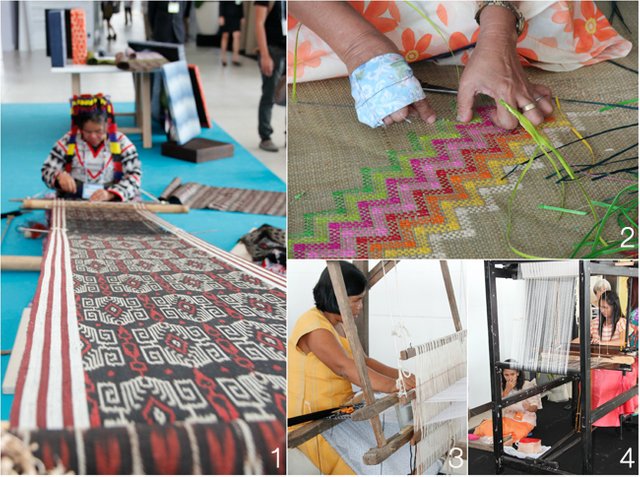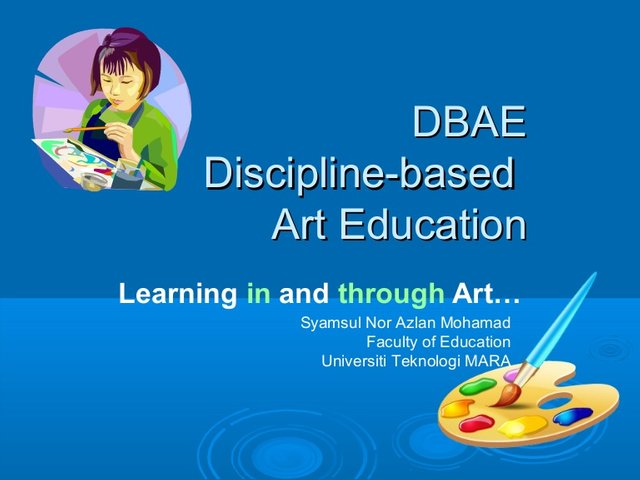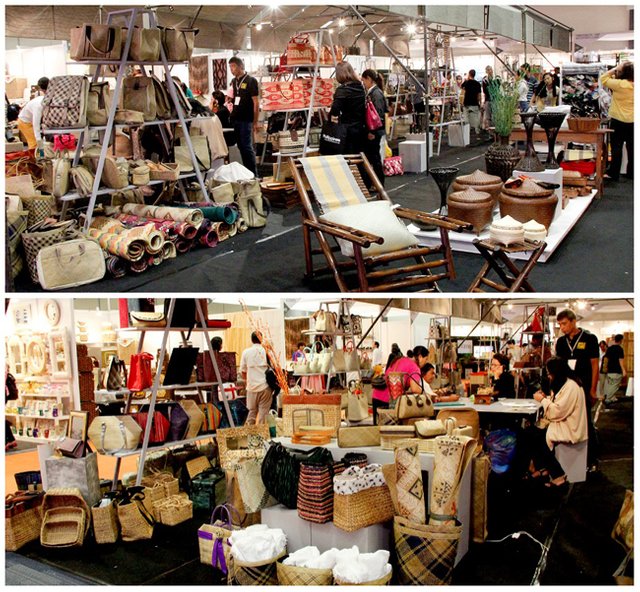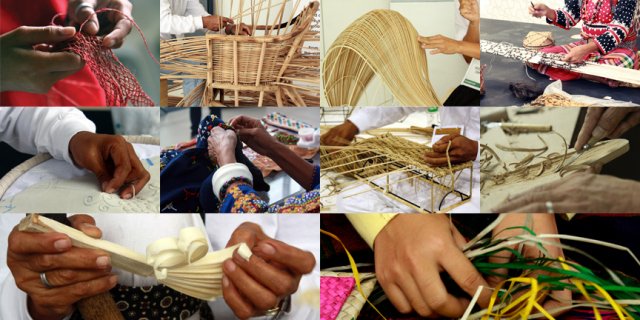The Framework of Crafts Studies and Its Importance: Discipline-Based Art Education
The Framework of Crafts Studies and Its Importance: Discipline-Based Art Education

Image Source
The accompanying discourse portrays DBAE and investigates how different Philippine crafts could fill in as course substance. This area draws from two creators, Robinson Castillano Soria, a Filipino, and Stephen Dobb, an American. Soria's thesis entitled "Workmanship Education and Student Artistic Development crosswise over Three Cultures" utilizes the DBAE structure to survey understudy aesthetic accomplishment in the Philippines, Taiwan, and the United States. His proposals incorporate receiving the DBAE approach in workmanship classrooms to improve state-funded school craftsmanship training, and to redesign the personal satisfaction of the overall population.
This present proposition conveys Soria's suggestion facilitate by incorporating customary craft objects into a DBAE-based educational modules. Then again, Stephen Mark Dobbs is the creator of Learning in and through Art, which thoroughly depicts the DBAE technique for instructing craftsmanship. His book fills in as a noteworthy source in this present segment's dialog.
What Is DBAE?
Robinson Soria (1997), in his investigation of Philippine craftsmanship instruction, characterizes DBAE as:
A contemporary way to deal with craftsmanship training that shows an expansive perspective of workmanship and underscores craftsmanship in the general instruction of all understudies from kindergarten through secondary school. This approach coordinates content from four workmanship disciplines, in particular: feel, craftsmanship feedback, craftsmanship history and craftsmanship generation through an attention on masterpieces.
Stephen Dobbs, creator of Learning in and through Art, portrays DBAE as intended to give introduction to, involvement with, and obtaining of substance from a few orders of information, however particularly from four foundational trains in workmanship—craftsmanship making, craftsmanship feedback, craftsmanship history, and style. By showing craftsmanship utilizing these foundational workmanship disciplines, learning is fixated on the creation, comprehension, and energy about craftsmanship, specialists, imaginative procedures, and the part and capacity of craftsmanship in societies and social orders.

Image Source
Before DBAE, workmanship classes had been fixated on inventive self-expression. This approach considers the learner inherently inventive and expressive, who needs supporting as opposed to direction. All things considered, educators just need to give inspiration, consolation, support and opportunity; they are not the slightest bit to force grown-up ideas or pictures; they should take alert against restraining the learner's self-expression; in reality, a learner's underdevelopment is ascribed exactly to grown-up intercession. Moreover, under this instructive rationality, masterpieces are not seen as material for study. They are seen to contrarily influence the learner's self-expression and inventive advancement. With respect to assessment, what is fundamental is the learner's development and procedure of craftsmanship making.
Then again, DBAE approaches an adjusted craftsmanship educational modules that burden content from four workmanship disciplines. It is a response to an approach that saw craftsmanship fundamentally as innovative self-expression. In the 1960s, the imaginative self-expression school was at its top in the craftsmanship educational module; notwithstanding, in various meetings in the United States, workmanship instructors started scrutinizing the predominant academic rationality. Later on, scholars, researchers, and analysts proposed options. What's more, by the center of the 1980s, DBAE had developed as a strong counterpoint to workmanship instruction.
Attributes of DBAE
To comprehend DBAE in better detail, we swing to Stephen Dobbs' work, Learning in and through Art, in which he identifies the attributes of DBAE. Citing Dobbs verbatim:
• Students are occupied with the thorough investigation of craftsmanship gotten from the four workmanship disciplines;
• A long-run program-arranging limit with regards to craftsmanship is set up, given driving force by the selection by the neighborhood school region, college, or workmanship historical center of a strategy proclamation and objectives for understudy discovering that incorporate exhaustive craftsmanship instruction;.
• A composed workmanship educational programs structure exists, or is being created, in which learning is sequenced inside and between evaluations to mirror the formative and age-fitting components;

Image Source
• Written, successive lesson units and learning encounters connect with understudies in adjusted consideration and study gotten from the substance of the four foundational craftsmanship disciplines: workmanship making (otherwise called studio workmanship or workmanship creation), workmanship history, craftsmanship feedback, and feel
• Art is educated by confirmed educators who are given open doors for expert advancement to construct their insight, aptitudes, and comprehension of DBAE. Workmanship masters and classroom or other subject educators team up in arranging and instructing;
• Students approach school-supported and community based craftsmanship encounters and assets, for example, visit visits to workmanship exhibition halls or to other open workmanship settings;
• Assessment of understudy learning is led routinely, with the outcomes answered to partners, including understudies, educators, heads, arrangement producers, and guardians;
• Art might be coordinated with the general educational programs through utilization of the unmistakable focal points procured through investigation of the four workmanship orders to content in other branches of knowledge. Craftsmanship might be incorporated into other branches of knowledge and the other way around;
• Art training is for all understudies, not only for the individuals who show ability in making workmanship. Understudies with unique needs are likewise distinguished and furnished with workmanship direction at all levels. DBAE is for all understudies, not only for the individuals who are recognized as "skilled and gifted" and accordingly supported with craftsmanship guideline;

Image Source
• The workmanship program is fittingly organized, controlled, and upheld at various levels: by the personnel pioneer and chief inside the school, and by the educational programs director inside the school area. The director may accept accountability for pushing and disclosing the program to the school board, which can bolster the program with guardians and the group; and
• Technology is utilized to widen craftsmanship educating and learning choices. Instructors and understudies approach innovation and utilize it (a) to upgrade generation, creation, or potentially outline of show-stoppers; (b) to convey about workmanship; and (c) to get to and oversee data about craftsmanship.
A thorough program needs the collaboration of a couple of instructors as well as the whole assemblage of teachers in a given school or region. Now, there might be reservations about its application to the nearby Philippine setting, what with a deficiency of assets: physical and material, including proficient preparing for DBAE teachers. These should be talked about at the appointed time. Meanwhile, it is imperative to harp on the four foundational craftsmanship teaches, the heart of DBAE, and how they can be connected to the investigation of crafts in a Philippine setting.

Image Source
Source:
Asian Studies
By: Carmita Eliza J. Icasiano
Welcome news. Shared with @Steemtrail.
https://discord.gg/uwjBaHb
Thanks
Great post. Please follow @steemiteducation so that we can read more of your posts, and help you succeed.
Done